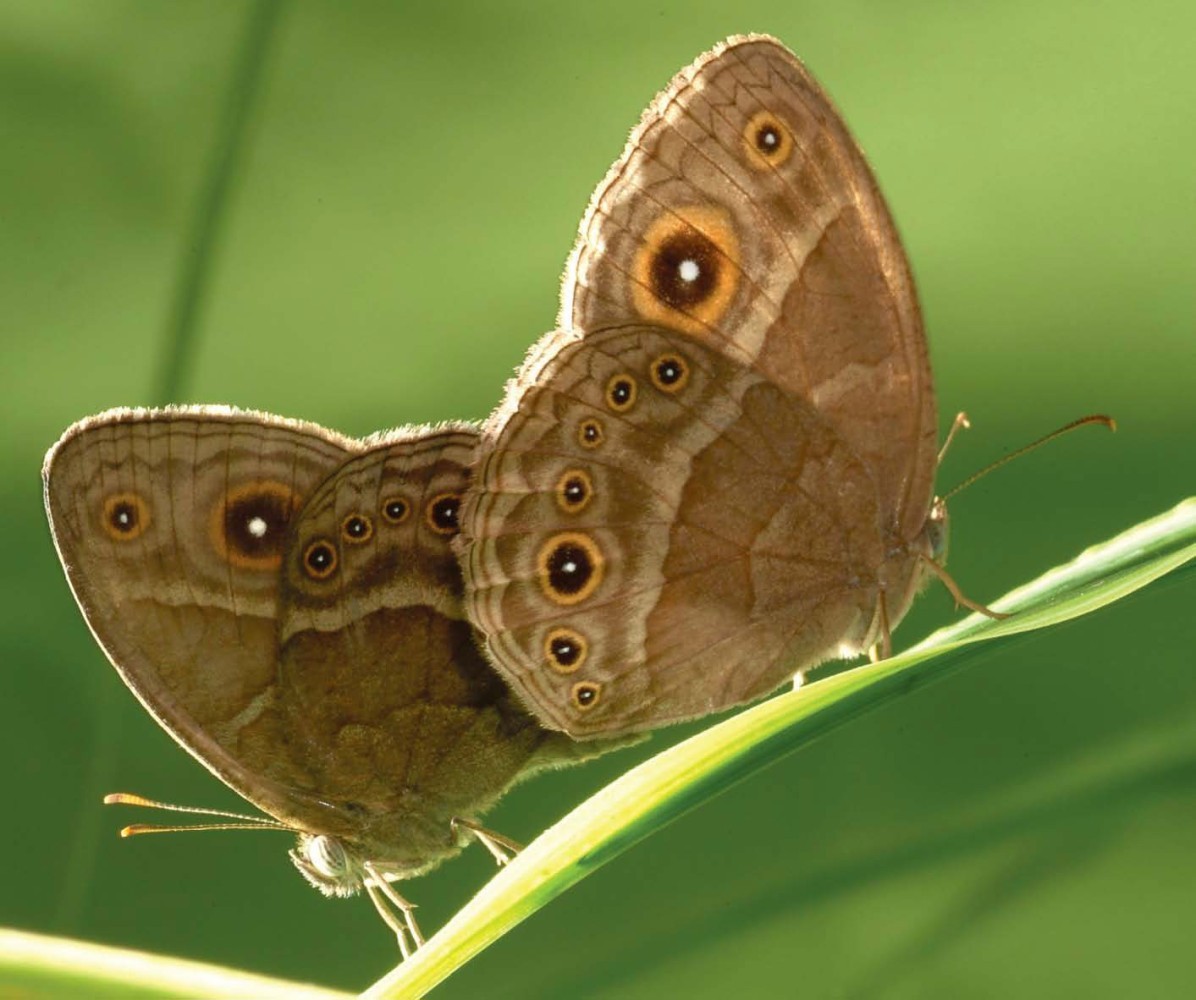It appears that Sadie Hawkins Day has made its way into the butterfly world. Or, more likely, the sex role reversal when women ask men out for a date got its start with insects and only recently migrated to the human world. But for butterflies that produce young in more than one season each year, it all depends on the weather.
According to Kathleen Prudic, a postdoctoral researcher at Yale University, the females of one species of butterfly in Africa actively court males with their bright wing patterns only when, as caterpillars, they have been raised in cool temperatures that mimic Africa’s dry season. When raised in the warm and humid conditions of the wet season, the males are more conspicuously ornamented than the females, so they take on the traditional role of suitor, leaving the females to choose their preferred mate.
The research, which was published this year in the journal Science, got its start when Prudic questioned why female squinting bush brown butterflies had the same beautiful patterns on their wings as did males. In most species, especially noticeable in birds, the males are more colorful so they can attract mates while the females are typically less showy and more camouflaged. Theorizing that courtship behavior might change given different environmental conditions, Prudic compared the behavior of adult butterflies when the caterpillars were raised at 27°C and 17°C.
Females raised in conditions that mimic the rainy season (27°C) in the butterfly’s native African range were more likely to mate with the most highly ornamented males. The roles were reversed when the caterpillars were raised in cooler, drier conditions (17°C). That’s when the females developed brighter color patterns and flashed their wings at prospective mates in hopes of being chosen. Males, on the other hand, were more discriminating among females.
There is a cost to this sex role reversal. When butterflies mate, the male not only provides sperm but also a nutrient-filled spermatophore referred to as a nuptial gift. The spermatophore delivered by the males raised in cool temperatures is of such a high quality that it increases the longevity of the female and allows her to lay more fertile eggs. But by giving away such valuable nutrients during mating, the lifespan of the cool-temperature males was much shorter.
“In conditions like those in the rainy season, the females have more to lose by making a mating mistake, so [she’s] choosy. In temperatures representing the dry season, the males are choosier because they provide more to the females but also suffer a great cost,” said Prudic.
This varied behavior based on environmental conditions might not be limited to an African butterfly. Butterflies in the northeastern United States, including the very common cabbage white, may also exhibit this sex role reversal. Any species that produces more than one generation each year and that encounters predictable but different environmental conditions between generations has the potential to exhibit this kind of change in sexual behavior, Prudic said.


